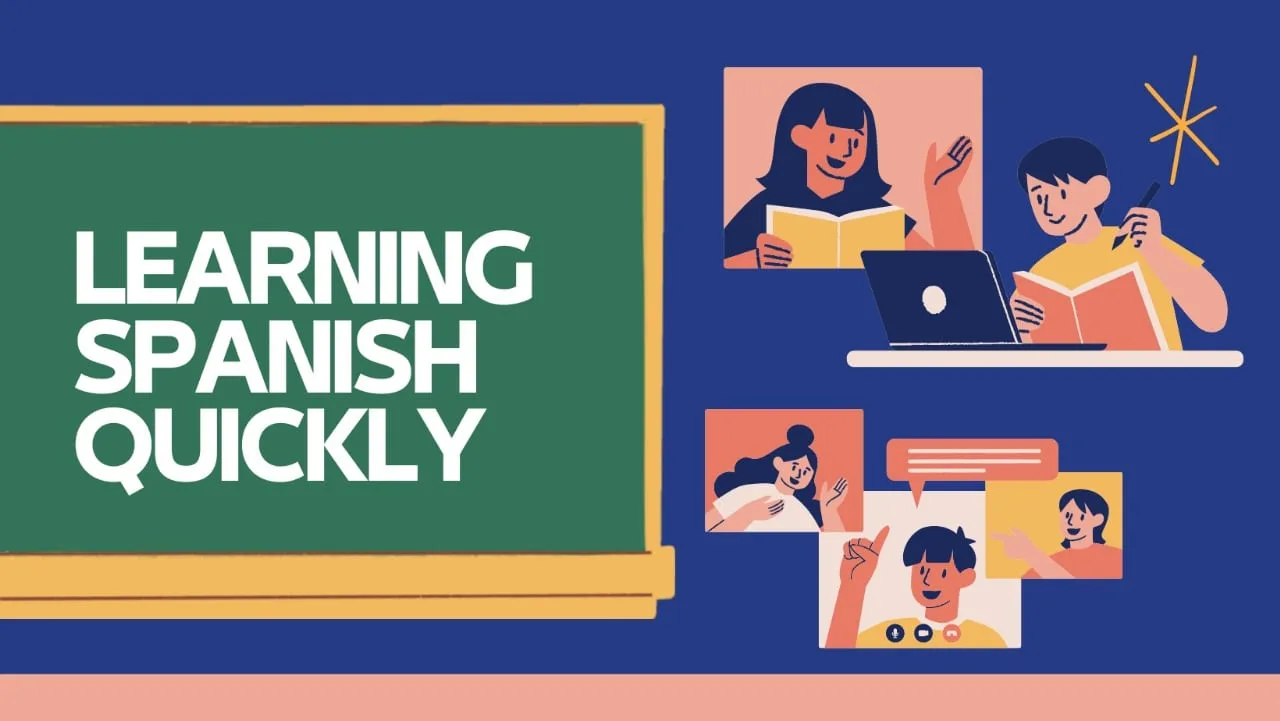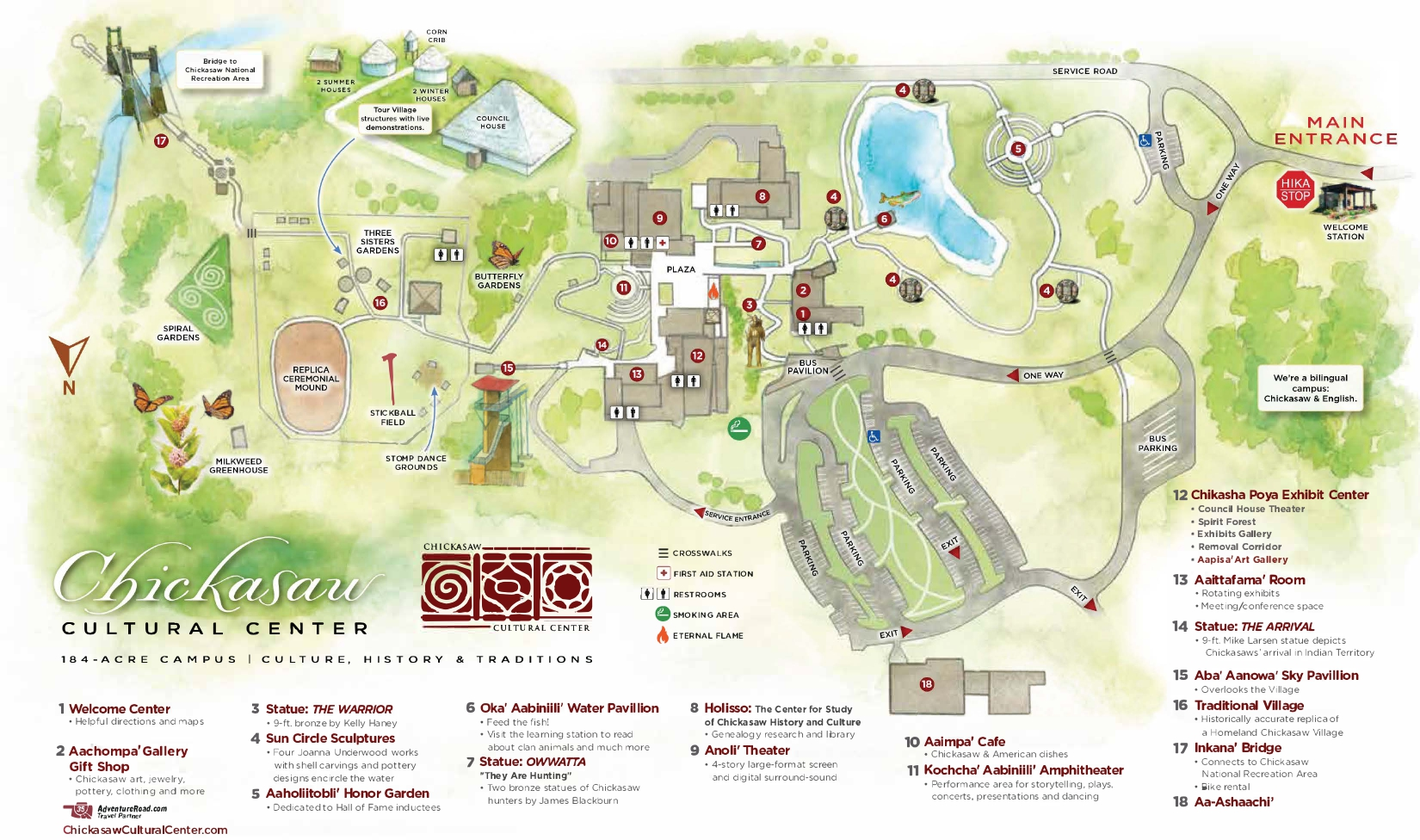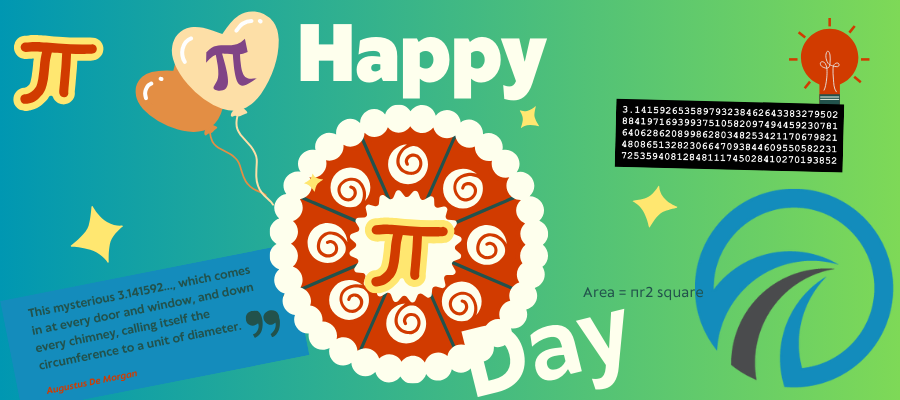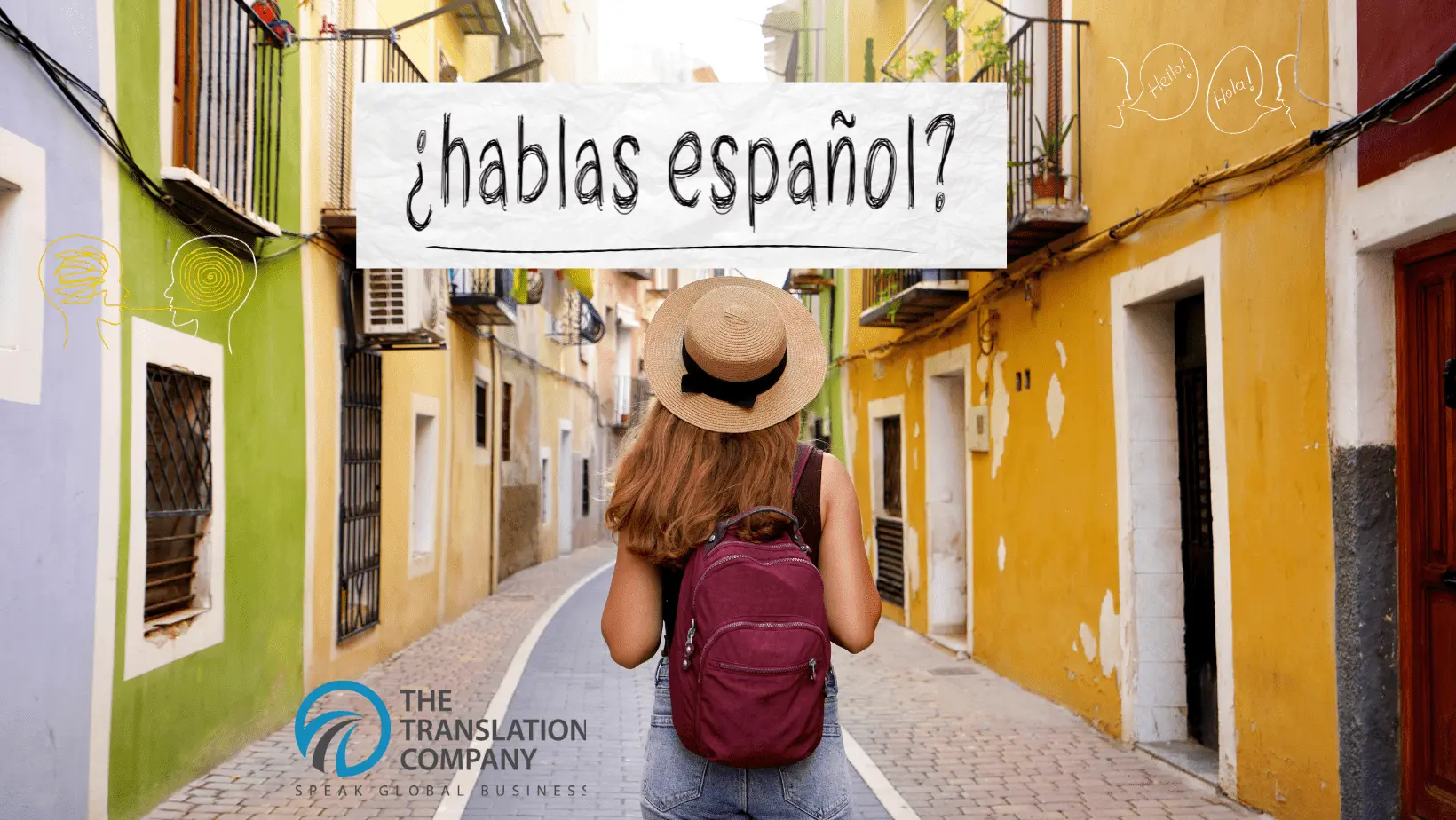
Ever wondered how much translators earn? Whether you’re considering a career in translation, already immersed in linguistic work, or simply curious about this global field, this guide offers an inside look at the numbers—and the evolving roles—shaping the translation industry today.
As a profession, translation crosses every border. With U.S.-based companies hiring talent from around the globe, the income potential varies significantly based on location, language pair, job type, and specialization.
Freelance vs. In-House: Two Distinct Career Paths
A translator’s first decision is whether to work freelance or as part of an in-house team. Each comes with distinct trade-offs in earnings, stability, and autonomy.
In-House Translators
In-house translators are salaried employees who work directly for companies, organizations, or government entities. In the U.S., they typically earn around $36 per hour, which is $70,000+ annually for full-time work. These roles offer predictability, benefits, and long-term career growth, especially in specialized areas like healthcare, law, or government.
However, in-house positions can have a salary ceiling. While roles that require certification or technical expertise may pay more, overall compensation tends to level off compared to high-earning freelancers.
Freelance Translators
Freelancers enjoy greater flexibility and the potential for uncapped earnings. Rates range from $30 to $70 per hour in the U.S., and income depends largely on workload, specialization, and marketing. A skilled freelancer can out-earn many in-house professionals, though inconsistent demand and lack of benefits make it a more volatile path.
Some translators choose a hybrid approach—working in-house while freelancing on the side to boost income and diversify experience.
How Location Impacts Translator Pay
Geography plays a crucial role in how much a translator can earn. Rates and salaries are often reflective of local economic conditions and the cost of living.
United States
Translators in the U.S. are among the highest-paid globally. According to the Bureau of Labor Statistics, the median annual wage is $59,440. Entry-level or part-time professionals may earn under $36,000, while top-tier translators can exceed $100,000. Specialized fields, certifications (like the ATA), and work for government or technical sectors often lead to higher earnings.
United Kingdom and Western Europe
In the UK, the average annual income for translators is around £30,000 (USD $37,000), with specialist roles, such as medical translation for the National Health Service, reaching up to £57,000. Across Western Europe, average earnings generally fall between €20,000 and €36,000, with higher salaries in major cities like Paris, Munich, or Amsterdam.
Northern and Eastern Europe
In Northern Europe, rates are higher due to the cost of living. Translators in Sweden or Norway often charge premium prices. By contrast, professionals in Eastern or Southern Europe typically earn less, though the cost of living is also lower. Rates can be significantly below Western European standards, especially for generalist roles.
How Language Pair Affects Earnings
Not all language combinations are created equal. The earning potential of a translator is heavily influenced by the supply and demand of the language pair.
- English to Spanish: High demand, but also high competition. Average rates around $0.11/word, with annual earnings ranging from $50,000 to $60,000 for steady freelancers.
- English to Arabic: Similar to Spanish in rate and demand. Specialized fields like legal or medical translation may command slightly higher fees.
- English to German or French: Slightly less saturation than Spanish, leading to average rates of $0.12/word. Technical fields can push rates even higher.
- English to Japanese or Chinese: Complex and high in demand. MTPE and traditional translation in these pairs often pay above-average rates due to linguistic difficulty and cultural nuance.
- Rare languages (e.g., Icelandic, Danish, Thai): Lower supply often leads to higher per-word rates—up to $0.14 or more—but jobs can be fewer and less consistent.
Specialization is another key factor. Medical, legal, financial, and technical translators generally earn more than generalists. Fields such as marketing (transcreation) and literature have unique pricing models, including royalties or flat project rates.
The Rise of MTPE: Machine Translation Post-Editing
One of the most significant industry shifts is the widespread use of MTPE—Machine Translation Post-Editing. This process involves refining machine-generated translations to make them suitable for publication or internal use.
MTPE Rates
- Full human translation: $0.09–$0.20/word
- MTPE: $0.05–$0.09/word
- Hourly MTPE work: $20–$40/hour, depending on the region and subject matter
While it’s marketed as faster, MTPE often requires significant time investment, especially when the machine output is of poor quality. Many experienced translators negotiate MTPE rates that reflect the complexity and quality of the draft they’re improving.
Regional Trends
- U.S. and Western Europe: $0.07–$0.10 per word
- Eastern Europe and Latin America: $0.04–$0.07 per word
- Southeast Asia, India, Africa: $0.02–$0.05 per word, though many professionals in these regions target international clients to earn at global market rates
Language pair continues to affect MTPE pricing, with higher rates for complex languages like Japanese, Chinese, and Korean.
So, How Much Do Translators Make?
The answer? It depends.
A U.S.-based salaried translator might earn $60,000 a year. A freelancer in Latin America could make $15,000, yet live comfortably. A rare-language expert handling legal contracts might exceed six figures. The key variables are location, experience, specialization, and language pair.
The industry rewards versatility and ongoing learning. Translation is not a path to instant wealth, but for those with dedication, it offers a rich and sustainable career with global relevance. As technology reshapes how language services are delivered, the human touch, insight, nuance, and creativity remain essential.
For linguists who adapt, specialize, and evolve, the future is not just bright—it’s multilingual.
Understanding the Translator Income Landscape
So, how much do translators make? The answer is that it depends on how and where they work, and in which languages. A translator could be a comfortable salaried professional in New York earning around $60k a year, or a digital nomad freelancing from Buenos Aires making $15k, or a highly sought specialist charging top dollar for rare language projects. Both freelance and in-house paths can be rewarding: freelancers enjoy the freedom to set higher rates and potentially out-earn their peers, while in-house translators get steady pay and benefits (and entry into specialized roles). Location and language dramatically shape earnings, with U.S. and Western European translators generally making the most in absolute terms, and regions like Latin America or Eastern Europe seeing lower typical incomes in line with local economies. High-demand language pairs with lots of translators yield moderate pay, whereas uncommon languages or highly technical work can command premium rates.
In the end, translation income spans a broad spectrum. New translators might start on the lower end, but there is room to grow. As translators build experience, credentials, and expertise (or add lucrative language pairs), they can increase their earnings over time. The translation industry may not be a path to instant riches, but for those with skill and perseverance, it offers a viable and often enriching career, one where a love of languages quite literally pays off.

Many people believe that sign language is the same everywhere. After all, it’s all gestures, how different could it be?
But here’s the truth: sign language is not universal. Just like spoken languages, sign languages vary widely across the globe. There are more than 130 recognized sign languages, with hundreds of local variations.
Each of these languages has its grammar, vocabulary, and history. So, a person fluent in American Sign Language (ASL) won’t automatically understand someone using British Sign Language (BSL) even though both countries speak English.
Why So Many Sign Languages?
Sign languages developed naturally within Deaf communities. They didn’t come from spoken languages; they evolved on their own, shaped by culture, history, and the daily needs of the people who use them.
In every corner of the world, Deaf individuals have created their ways of communicating. Just like English differs from Chinese or Arabic, ASL, BSL, and other sign languages are completely distinct.
Let’s take a closer look.
Real Examples from Around the World
-
American Sign Language (ASL)
Used primarily in the United States and parts of Canada, ASL is one of the most widely used sign languages in the world. It’s a full language in every sense, complete with grammar rules, expressions, and a rich cultural background. ASL uses a one-handed alphabet and is closely related to French Sign Language (LSF), not BSL.
-
British Sign Language (BSL)
BSL is the main sign language used in the UK. Unlike ASL, BSL uses a two-handed alphabet and has completely different signs and structure. Even though ASL and BSL users both speak English, their sign languages are not mutually intelligible.
-
Japanese Sign Language (JSL)
Japan has its unique sign language, too. JSL incorporates elements of Japanese culture and language. It also includes regional dialects, much like spoken Japanese. A signer fluent in JSL would not be able to understand ASL or BSL without studying them first.
And these are just three examples. There’s also Indo-Pakistani Sign Language, Chinese Sign Language (CSL), and many more, each with its own identity.
Can Deaf People from Different Countries Understand Each Other?
In most cases, no. A Deaf person from Japan using JSL won’t be able to have a conversation with someone from the U.S. who uses ASL unless one of them has learned the other’s language.
While some international events use a system called International Sign, it’s not a true language. It’s a simplified blend of signs used to get basic ideas across, more like a temporary tool than a native language.
It’s often used at global gatherings like the Deaflympics or World Federation of the Deaf meetings. But it doesn’t replace local sign languages. And it’s far from universal.
Why Sign Languages Aren’t One-Size-Fits-All
Sign language is just as diverse as spoken language. The idea of a single, universal sign language sounds convenient, but it simply doesn’t exist. Each Deaf community has developed its language, shaped by local culture and history.
Understanding this distinction is essential, not just for those in the Deaf community, but for educators, travelers, and anyone curious about how humans communicate across borders.
Whether it’s ASL in North America, BSL in the UK, or JSL in Japan, sign languages reflect the uniqueness of the people who use them, and that diversity is something to be respected and celebrated.
That’s why learning about different sign languages isn’t just interesting, it’s important. It reminds us that communication goes far beyond words, shaped by the experiences and identities of people around the world.

The internet is filled with valuable information, but much of it is written in languages we don’t speak. Whether you’re browsing for news, shopping online, or doing research, learning how to translate a web page can help you access content from all over the world.
This guide breaks down the most effective ways to translate websites, with step-by-step instructions for beginners and helpful tools for regular users.
Why You Might Want to Translate a Web Page
Here are a few common reasons people need to translate websites:
- You’re researching something and land on a site in another language
- You’re traveling and need to read local pages
- You want to follow international news or blogs
- You found a great product, but the store’s site isn’t in your language
Instead of leaving the page or guessing what it says, you can translate it in just a few clicks.
1. Translate Pages Automatically in Your Browser
Google Chrome
Chrome usually detects foreign languages and offers to translate them automatically. If it doesn’t:
- Click the three-dot menu in the upper-right corner.
- Go to Settings > Languages.
- Turn on “Offer to translate pages that aren’t in a language you read.”
When you visit a foreign site, Chrome will ask if you want to translate. You can click “Translate” right there.
Microsoft Edge
Edge uses Microsoft Translator:
- When you land on a non-English page, a prompt will appear.
- Click “Translate” to read the page in your language.
- You can also click the translate icon in the address bar if you miss the pop-up.
Safari (Mac/iPhone/iPad)
Safari’s built-in translation is quick and clean:
- Tap the aA icon in the address bar.
- Choose Translate to English (or your preferred language).
- If you don’t see this, go to Settings > Safari > Language to enable the feature.
2. Use Google Translate for Any Page
If your browser doesn’t have a translation tool—or you want more control—try Google Translate’s website:
- Visit translate.google.com.
- Paste the web page URL into the box.
- Choose the original and target languages.
- Click the translated link to view the page.
This is a great backup tool for any device and supports over 100 languages.
3. Install a Browser Extension
If you translate often, a browser extension can save you time:
- Google Translate for Chrome: Adds a toolbar button for quick translation.
- ImTranslator for Firefox: Offers several translation services with advanced features.
With these tools, you can translate full pages or selected text without switching tabs.
4. Mobile Translation Options
Google Translate App
The app is powerful and simple:
- Open the app and tap “Websites”
- Enter the URL
- The site loads in your chosen language
This is ideal for translating web pages on the go, especially if you’re using Safari or another browser that doesn’t support translation well.
Things to Keep in Mind
- Automatic translations aren’t perfect. They may miss context or use awkward wording.
- Don’t rely on machine translation for legal, technical, or sensitive content—use a professional translator instead.
- Some site elements may not translate, especially if they’re images or embedded code.
Going Beyond: Making Your Own Site Multilingual
If you have a business or blog and want to reach more people, making your website available in more than one language is a great idea. Tools like Phrase, WPML for WordPress, and Weglot make it easier to manage translations in a professional way.
Learning how to translate a web page is also a handy skill. It helps make the internet feel smaller and more welcoming. With just a few steps and the right tools, you can discover new content, connect with different cultures, and find the information you need.
Want to make your site available in multiple languages? Get in touch with us at The Translation Company. We’re here to help.
3 Common Ways to Translate a Website
Before diving into the translation process, it’s essential to choose the method that best aligns with your goals—whether that’s speed, cost-efficiency, or linguistic precision.
1. Human Translation
This method involves hiring a professional translator to convert your website content into another language. It’s one of the most reliable and trusted approaches.
Why it’s a good choice:
- Highly accurate
- Considers meaning, tone, and cultural nuance
- Maintains your brand’s voice and style
- Ideal for creative and catchy content
- Supports search engine optimization (SEO)
Things to consider:
- More expensive than other methods
- Takes longer to complete
- Potential for human error (e.g., typos)
- May encounter delays due to translator availability
2. Machine Translation
This method uses AI-powered software to translate your content automatically. It’s a fast and cost-effective solution, especially for large-scale projects.
Why it’s helpful:
- Immediate results
- Cost-effective
- Scalable for extensive content
- Easily reviewed and edited afterward
Limitations to keep in mind:
- May not suit nuanced or creative content
- Often lacks natural flow or appropriate tone
- Misses idiomatic and cultural subtleties
- Can be less engaging or misleading without review
3. Post-Editing Machine Translation (MTPE)
This hybrid approach combines the speed of machine translation with the quality assurance of human editing. A translator refines the machine-generated text to ensure clarity, accuracy, and natural flow.
Why it’s becoming popular:
- Faster than full human translation
- More affordable than traditional methods
- Offers a strong balance between quality and efficiency
Need Help Translating Your Website?
At The Translation Company, we’ve helped numerous businesses successfully localize their websites for global markets. Whether you’re looking for the accuracy of human translation, the speed of machine translation, or the balance of MTPE, we’ve got you covered.
Interested in learning more or starting your project?
Reach out to us today and we’ll make sure your website speaks every language your audience does.

If you’ve ever thought about picking up a second (or third!) language, you’ve probably asked yourself, “What is the easiest language to learn?” It’s a totally fair question because who doesn’t want to make the journey a little smoother?
The thing is, there’s no one-size-fits-all answer. What feels easy to one person might be tricky for someone else. But don’t worry, we’re diving into what actually makes a language easier to learn and which ones are great starting points if you speak English.
So, What Makes a Language “Easy”?
First off, “easy” is relative. It depends on a few things like:
- Familiarity with the alphabet: If a language uses the same letters as English, you already have a head start.
- Grammar and sentence structure: The fewer weird rules and exceptions, the better.
- Similar vocabulary: If a word in another language looks or sounds like its English cousin, it’s easier to remember.
- Pronunciation: Some languages just sound easier. Others make your tongue feel like it’s doing gymnastics.
- Exposure: The more you see or hear the language in your everyday life, such as through TV, music, or social media, the faster you’ll learn it.
Now let’s talk about a few languages that tend to be easier for English speakers.
1. Spanish – The Classic Starter Language
Spanish is very popular, and for good reason. It’s phonetic, meaning you read it the way it’s written. The grammar is logical, and there are tons of free resources. Plus, you’ll run into Spanish speakers all over the world, from Spain and South America to your own neighborhood.
2. French – Fancy, But Friendly
French has a reputation for being a bit tricky, especially with all the silent letters, but don’t let that scare you. A lot of English words actually come from French, so you’ll recognize more than you think. And let’s be honest, it’s hard to beat how beautiful it sounds.
3. Italian – Like Music to Your Ears
Italian is basically made to be spoken out loud. The pronunciation is clear and consistent, and the grammar feels manageable once you get the hang of it. If you’ve ever dreamed of ordering pasta in perfect Italian while in Rome, this might be your sign.
4. Norwegian – A Hidden Gem
This might be a surprise, but Norwegian is one of the easiest languages for English speakers, according to the U.S. Foreign Service Institute. It has simple grammar, familiar words, and pronunciation that’s easier than you might expect. Plus, once you know Norwegian, understanding Swedish and Danish becomes much easier too.
5. Dutch – Like German, But Kinder
Dutch is kind of the “middle child” between English and German. Some sounds can be tough, but the grammar is more forgiving than German’s. The vocabulary often feels oddly familiar. It’s quirky, in a good way.
A Quick Reality Check
Here’s the truth: the easiest language to learn is the one that keeps you motivated. You could go for the “simplest” option, but if you’re not interested in the culture, music, or people, it’s going to feel like homework. On the other hand, if you’re obsessed with Korean dramas or planning a trip to Brazil, those languages will naturally feel more fun, and that makes them easier to stick with.
So, what is the easiest language to learn? It depends on you. But if you’re an English speaker and looking for a friendly place to start, Spanish, French, Italian, Norwegian, and Dutch are great options.
Pick the one that sparks your curiosity. Download a language app, watch a show in that language, or find a conversation partner. You’ll be amazed how quickly it starts to click when you’re enjoying the process.

Quick spanish
Spanish is among the world’s most common languages, and fluency will enable you to tap into new cultures, professional opportunities, and self-improvement. Whether you’re getting ready for a trip, growing a company, or just a new challenge, Spanish is something you can learn fast if you make the most of the opportunities.
1. Concentrate on High-Frequency Vocabulary
Begin by mastering the 1,000 most frequently used Spanish words. The vocabulary you know at this level enables you to listen to and engage in common conversations. Materials such as the Corpus del Español offer lists of the basic words and help you learn according to priorities.
2. Surround yourself with the Language
Immersion is a powerful means of learning a new language. Surround yourself with Spanish by watching TV shows, listening to music, and reading Spanish material. Sites like Lingopie provide interactive content such as dual-subtitled videos, allowing you learn vocabulary and pronunciation within context.
3. Practice Speaking Regularly
Spoken practice is imperative for fluency development. Practice conversation using native speaker exchange websites or take a tutor for one-to-one sessions. Practice on a regular basis and you will get more confident and develop the ability of pronunciation and comprehension.
4. Learn Using Language Learning Apps
Use technology to improve the way you learn. There are apps such as Duolingo, Memrise, and Busuu that provide systematic lessons, tests, and games that are designed for different types of learners. These tools allow you to supplement your studies and offer a means for regular practice.
5. Set Realistic Goals and Maintain a Routine
Set definite, realistic objectives for the journey of learning a new language. Whether you spend 30 minutes a day on lessons or learn a set number of words each week, consistency will be the key. Practice on a regular basis supports what you know and keeps you going.
6. Accept Mistakes as Opportunities to Learn
Don’t be afraid of mistakes; they are a necessary part of the process of learning. Each mistake tells you where you should improve and enable you to work on perfecting yourself. Stay positive and look upon challenges as opportunities for development.
7. Tailor Your Learning Experience
Use your interests and objectives as guidelines for your studies. If you’re interested in cooking, concentrate on food vocabulary; if you’re planning a trip, study about navigation and where you’re going to stay. Making the lessons relevant and interesting makes them easier.
8. Integrate Spanish into Daily Life
Make Spanish a part of your daily routine by tagging household objects, setting the device settings on Spanish, or mentally using the language while going about daily chores. Such minute changes provide a perpetual environment of learning and reinforce ability.
9. Connect with Spanish-Speaking Communities
Join social media groups, forums, or community events where Spanish is the predominant language. Speaking with native speakers gives you hands-on experience and exposure to various dialects and cultural aspects.
10. Track Your Progress and Celebrate Milestones
Remembering your achievements and recognizing your progress makes you more motivated. Rewards for small achievements enhance motivation and reinforce commitment towards learning. Reviewing goals and achievements on a regular basis ensures continued momentum.
How To Get Started
Free Quote
sales@thetranslationcompany.com
800.725.6498
#1 Contact us to get a free quote or questions answered, or
#2 Upload your files for an instant translation quote, or
#3 Schedule a free Zoom meeting with our team now.
Ever have one of those days where you learn something new, eat great food, and still feel like you’re on a mini vacation? That’s exactly how I’d describe our day at the Chickasaw Cultural Center in Sulphur, Oklahoma.
From the moment we pulled into the large and accessible parking lot, I could feel we were in for a special experience. We just followed the crowd into the reception area where friendly staff and tribal members greeted us with warm smiles. They handed us a super handy activities bag filled with coloring books, bracelet kits, Chickasaw-themed crafts, and a very easy-to-follow map and activity schedule. Right away, it felt like a perfect mix of educational and family-friendly.
First Stop: The Aachompa’ Gift Shop
Before we dove into the exhibits, we wandered through the Aachompa’ Gift Shop—and let me tell you, if you love handcrafted and meaningful souvenirs, this is the place. From Chickasaw jewelry, pottery, bows, and traditional clothing to t-shirts, stickers, and exclusive Pendleton blankets (like the “Issobombiniili’ – Rides on a Horse” pattern by Brent Greenwood), there really is something for EVERYONE!. The prices were reasonable too. We walked away with a really cool mug ($7!) and the cutest bison plush ($7).


Holisso: A Deep Dive into Chickasaw History & Heritage
Right outside the shop is the Holisso: Center for the Study of Chickasaw History and Culture. This library is filled with beautifully preserved records and archives. I was blown away by the advanced tech they use to preserve and share oral history, genealogy, and more. If you’re into ancestry or tribal history, definitely make an appointment (info at the bottom of this post). Oh, and there’s a NASA uniform worn by the first Native American astronaut on display—super cool!
Lunchtime at Aaimpa’ Café: Delicious and Affordable
After soaking in so much knowledge, we were ready to eat. At Aaimpa’ Café, the warm greeting continued—this time in the Chickasaw language! The food was flavorful and crazy affordable. The kids enjoyed their huge sugar cookies and I indulged in the chocolate and coconut cookies, YUM!
They’ve got indoor seating, free WiFi, and it’s all super cozy. There’s even a theater inside the café building where they show cultural films and fun kids’ movies too.

2023-aaimpa-cafe-menu-revised (Download the menu)
Chikasha Poya Exhibit Center: A Journey Through Time
Across from the café, we headed into the Chikasha Poya Exhibit Center ($7 per person, totally worth it). This interactive space blew us away with exhibits that pulled you into Chickasaw history—everything from early European contact to present-day cultural achievements. If you’re traveling on a budget, you can still enjoy outdoor artist stations for free and use your cash for one-of-a-kind handmade art.
The Chikasha Inchokka’ Traditional Village: An Unforgettable Experience
This was the highlight of the whole day. Walking through the Chikasha Inchokka’ Traditional Village felt like stepping back into the 1700s. The path across the sky bridge was stunning (and makes for great photos). Once inside the village, we learned about Chickasaw homes, council houses, corn cribs, and even watched a stomp dance demonstration. Tribal members were dressed in full regalia and explained the significance of each piece.

Chickasaw Boots
We even joined in a social dance—it was such a powerful and joyful moment. There were also presentation stands where tribal members explained how they created their cultural artifacts, very interactive and friendly.

Chickasaw Tribe
Quick Q&A: What You Need to Know Before You Go
- Pets aren’t allowed, but trained service animals are welcome.
- Open: Tuesday–Saturday, 10 a.m.–5 p.m. The café serves full menu 11 a.m.–3 p.m.
- Fully accessible. Wheelchairs and golf cart service available. They also offer golf card rides that are fun and free.
- Activities move indoors when needed. Tornado shelters are available.
- Pictures are allowed, but no flash in exhibits. Videos for personal use only.
- Outside snacks allowed in outdoor areas.
- Smoke-free campus. Smoking allowed only in designated parking lot areas.
- No weapons, glass, alcohol, drugs, or tobacco products on campus.
- Lost & Found available, ask security at the Welcome Center.
- Most of the center is free! Only Chikasha Poya Exhibit Center and some films require tickets.
- ️️️Group discounts available. Call (580) 622-7130 or email: Special.EventsCCC@Chickasaw.net.
- ️️️Food available: First American dishes and modern options. Try the elk burger, buffalo sandwich, or Chickasaw Special!
The visit to the Chickasaw Cultural Center was more than a day trip—it was an experience filled with discovery, culture, and heartfelt connections. Whether you’re traveling solo, with kids, or bringing the whole family, this place offers something for everyone.
Address: 867 Cooper Memorial Dr., Sulphur, OK 73086
Phone: (580) 622-7130
️️ Getting There: Take exit 55 off I-35. It’s about 10 minutes east of the highway.
Trust me—you’ll walk away with more than souvenirs. You’ll leave with a deeper understanding of a people and culture that continues to thrive and inspire.

Chickasaw Campus Map
Today, we discuss Autism Awareness Day and we want to celebrate not just awareness—but understanding, acceptance, and action. At The Translation Company, we believe that true inclusion means creating space for everyone to be seen, heard, and empowered. And today, we’re honored to spotlight one of our own: Matthew.
Matthew is an incredible member of our team. He’s passionate, thoughtful, and brings a unique perspective that makes our workplace richer every day. Matthew is on the autism spectrum, and working alongside him has been a reminder of how diversity in thinking and communication styles can lead to more empathy, more creativity, and better collaboration.
More Than Awareness: Real Opportunities Matter
Awareness is a great first step—but it’s not the finish line. We believe that every individual deserves real opportunities to shine. For people on the autism spectrum, that means going beyond symbolic gestures and focusing on actionable inclusion: inclusive hiring practices, supportive environments, and the tools needed to thrive.
As a language service provider, we know that communication is everything. That’s why we take language access seriously—and why we believe that inclusion must extend to how we communicate with and about neurodivergent individuals.
Here are some practical ways workplaces can foster better communication and support:
- Break tasks into simple steps. Clear, step-by-step instructions help make tasks easier to understand and complete confidently.
- Clarify expectations. Ask the person to repeat or confirm what needs to be done—this builds understanding and reduces miscommunication.
- Maintain consistent schedules. Predictability in daily routines can reduce anxiety and help individuals feel more comfortable at work.
- Provide breaks between tasks. Short breaks during the day—especially after completing a task—can help prevent overwhelm and support focus and well-being.
- Use visual supports when needed. Diagrams, checklists, and visual cues can reinforce verbal instructions and aid comprehension.
- Be mindful of sensory environments. Noise, lighting, or strong smells can be overwhelming for some individuals on the spectrum—adequete space placement at work or sensory-friendly areas can make a big difference.
- Avoid figurative language. Be as literal and direct as possible to minimize confusion. Avoid sarcasm, idioms, or vague phrases unless you know the person is comfortable with them.
- Encourage feedback. Create safe opportunities to ask, “Is this working for you?”—and be open to adapting your communication or workflow.
Matthew in His Own Words
To celebrate today, Matthew offered to answer a few thoughtful questions from our team—sharing his perspective, experiences, and hopes for a more inclusive future. His responses will be featured below in both written and video formats, so you can hear directly from him.
- What do you do at The Translation Company?
2.What is your biggest challenge in the workforce?
3. What do you wish people knew about you (or other people in the spectrum)?
4. Please tell us something about you that no one knows.
5. What’s the one thing you wish others knew about the way you communicate?
6. What do you wish companies knew about neurodivergent people?
7. What is your message to other neurodivergent people?
A Message of Hope
Our message this Autism Awareness Day is simple: inclusion isn’t just a checkbox—it’s a mindset. And when we embrace neurodiversity, we all benefit. From creating welcoming workplaces to rethinking how we communicate, there are so many ways we can all do better.
We’re grateful for Matthew, and for every individual who helps us see the world through a broader lens.
Let’s keep the light on—and keep moving forward, together. Here is Matthew’s inspirational world autism day quote:

Being yourself is your greatest strength.

March 14th marks a special occasion for math enthusiasts and educators worldwide—Pi Day! This annual celebration honors the mathematical constant π (pi), which represents the ratio of a circle’s circumference to its diameter. While its numerical value extends infinitely—starting with 3.14159—Pi Day is more than just a tribute to numbers. It’s a day filled with fun activities, educational initiatives, and, of course, plenty of pie.
But beyond math, did you know that Pi has an interesting connection to language and translation? Numbers and words are universal bridges across cultures, and in the world of education, ensuring accurate translation of mathematical concepts is just as critical as teaching them. In this blog, we’ll explore some fascinating fun facts about Pi, its role in global education, and why translation in math education is essential for learning across languages.
Fun Facts About Pi: A Number That Goes On Forever
Pi is one of the most famous numbers in the world, but how much do you really know about it? Here are some intriguing facts:
1. Pi Is Infinite
Unlike most numbers we use daily, Pi never ends and never repeats. Mathematicians have calculated it to trillions of digits, and yet, it keeps going! Computers are constantly computing more digits of Pi just for the challenge.
2. Pi Is Older Than You Think
The first known calculations of Pi date back over 4,000 years, with ancient civilizations like the Babylonians and Egyptians estimating its value. The Greek mathematician Archimedes was one of the first to develop a method to approximate Pi with remarkable accuracy.
3. Albert Einstein Was Born on Pi Day
March 14th is not just famous for Pi—it’s also Albert Einstein’s birthday! The physicist, who revolutionized our understanding of space and time, was born on March 14, 1879. Many schools incorporate Einstein’s discoveries into their Pi Day celebrations.
4. Pi Plays a Role in Nature
Pi isn’t just a theoretical number—it appears in nature, physics, and even music. From the way planets orbit the sun to the structure of DNA and even the ripples in water, Pi is a fundamental part of the natural world.
5. Pi Day Doesn’t Work in Every Country
While Pi Day is widely celebrated in the United States, it doesn’t translate well in many other countries—especially in Latin America and Europe. Why?
- Date Formatting Differences: Many countries use the day-month-year format (DD/MM), so March 14 (3/14 in the U.S.) is written as 14/3 in places like Brazil, Argentina, and Spain. This means that Pi Day loses its numerical significance.
- Linguistic Differences: In English, “Pi” sounds like “pie,” making it fun to celebrate with actual pies. However, in Spanish and Portuguese, “Pi” does not have the same phonetic connection.
Pi and Translation: Why Math Needs Language
Mathematics is often called a universal language, but did you know that how we communicate math concepts can vary from country to country? Translation in math education plays a critical role in ensuring students around the world can understand, learn, and apply mathematical concepts accurately.
1. Different Countries, Different Notations
While numbers remain constant, the way we express mathematical formulas and concepts can differ across languages. For example:
- In the U.S., the decimal separator is a dot (3.14), while in many European and Latin American countries, it’s a comma (3,14).
- Some languages write fractions with a horizontal bar (1/2), while others use different symbols.
Without proper translation and localization, these differences can lead to confusion for students learning math in a second language.
2. Word Problems Require Accurate Interpretation
Mathematical word problems are common in education, but their linguistic complexity can vary across languages. A simple problem like:
“If a pizza is cut into 8 slices and you eat 3, how much of the pizza is left?”
may not translate word-for-word into another language in a way that maintains clarity and accuracy. Translators specializing in educational content ensure that word problems are culturally and linguistically adapted so that all students can grasp the mathematical principles behind them.
3. Pi in Ancient Texts: A Challenge for Translators
Historical documents from various civilizations reference Pi, but they were written in languages such as Ancient Greek, Sanskrit, and Arabic. Translating these texts while preserving their mathematical integrity is a challenge that linguists and historians work hard to overcome.
4. Standardized Testing and International Education
Global assessments like the TIMSS (Trends in International Mathematics and Science Study) or PISA (Programme for International Student Assessment) require consistent mathematical language across different languages. Accurate translation ensures that students from different countries are tested fairly, without linguistic bias affecting their performance.
How Translation Services Help Math Education Thrive Globally
As a professional translation company specializing in educational content, we understand the importance of precise and culturally appropriate translations in math and science education. Our work ensures that:
✅ Students learning in a second language can understand complex math concepts without misinterpretation.
✅ Educational institutions can publish math textbooks and online materials that are accurate across multiple languages.
✅ EdTech platforms can develop multilingual math learning tools that serve diverse student populations.
✅ Teachers and parents have access to translated resources that align with the curriculum in their native language.
In an era of global education, language access in STEM fields is more important than ever. Whether it’s Pi or any other mathematical concept, translation makes knowledge accessible to all.
Final Thoughts: Celebrate Pi Day with Learning and Language
Pi Day is a great reminder that math connects us all, regardless of language or culture. Whether you’re a student solving equations, a teacher explaining geometry, or a translator ensuring accurate mathematical communication, the power of numbers and words working together is undeniable.
So, this Pi Day, why not celebrate by:
Solving some fun Pi-related math problems
Exploring how math is taught in different languages
Learning about the role of translation in STEM education
And, of course, if you’re in a country where Pi Day doesn’t quite translate, you can still take the opportunity to appreciate the magic of math—even without the pie!
Happy Pi Day from all of us at The Translation Company!

Beginner’s guide to Spanish
Spanish is one of the most spoken languages in the world. With more than 400 million native speakers, its presence cannot be denied. For those who want to travel, aim to advance their careers, or want to enhance their personal development, there are numerous strong reasons to learn Spanish. However, many are stuck, not knowing where to start.
The easiest way to learn Spanish is through adopting a structured method. Whatever your reason for learning the language, this guide has been written to take you through a clear, step-by-step process. So, keep reading, and let us set out on this journey together!
The Significance of Spanish Language Learning
Before we start the learning process, let’s first understand what value learning Spanish can add to your life. Studies suggest bilingualism has many cognitive benefits as it can boost your memory, problem-solving, and multi-tasking abilities. This indicates the significant value of learning Spanish for traveling, international professionals, or for getting jobs that require bilingual personnel. Aside from this, Spanish is not only spoken in America and Spain but in over 20 other countries as well. Many high schools in America teach Spanish as a compulsory subject for its significance as the most spoken non-English language in America with a massive Hispanic population. Hence, learning Spanish holds much significance in understanding the culture, communication, and for opting future opportunities in diverse communities.
Learning Spanish in 6 steps
On the surface, the possibility of learning a new language may seem daunting; however, by going through a systematic process, you will find that speaking Spanish is second nature, filled with confidence. The six easy steps that you have to go through are:
Step 1: Set Clear Goals
The beginning of learning a new language is about setting your objectives. When you have clearly outlined learning goals, you stay motivated and focused on learning rather than getting distracted. To set your goal, think of asking yourself a few questions: “Why do you want to learn?”, “How good do you want to be?”, “How much time are you willing to invest learning Spanish?”
After you have a better understanding of yourself, you can set a SMART goal—specific, measurable, achievable, relevant, and time-bound. Only then will you have a proper guide for the path ahead.
Step 2: Develop a Strong Vocabulary Base
A large vocabulary is essential for learning any language, and Spanish is no exception. The more words you know, the more conversations you can have. Start with common Spanish words and pharases like greetings, expressions, and questions. Flashcards can help with memorization. Over time, these words and phrases will become second nature.
Step 3: Learn Basic Grammar
Grammar gives form to language. The basic form of a Spanish sentence is similar to that of English: Subject-Verb-Object. Also important is the mastery of gender agreement, as Spanish nouns differ based on their gender.
Step 4: Practice Daily
To become fluent, listen and speak every day. Listen to Spanish movies and TV shows, podcasts, and audiobooks, and look for opportunities to speak with native speakers.
Step 5: Immersion in the Language
One of the most powerful ways to solidify your Spanish skills is through full immersion. Surrounding yourself with the language as much as possible will help reinforce vocabulary, improve comprehension, and build confidence in speaking naturally.
Traveling to Spanish-speaking countries is one of the most effective ways to accelerate your learning and gain firsthand exposure to the language. Immersion allows you to practice Spanish in real-life situations—whether ordering food at a local café, asking for directions, engaging in casual conversations with native speakers, or simply observing how locals communicate and interact. Even passive exposure, like listening to everyday conversations, can make learning Spanish more engaging and dynamic. Beyond language skills, traveling deepens cultural understanding, helping you appreciate regional dialects, traditions, and customs. If a trip isn’t possible, consider virtual immersion through Spanish-language films, music, online communities, or language exchange programs. The more you surround yourself with Spanish, the more naturally it will become a part of your daily life.
Step 6: Read and write in Spanish.
Reading and writing will drive your advancement while cementing everything you have learned.
Traveling to Spanish-speaking countries is one of the most effective ways to accelerate your learning and gain firsthand exposure to the language. Immersion allows you to practice Spanish in real-life situations, whether ordering food at a local café, asking for directions, or engaging in casual conversations with native speakers. Beyond language skills, traveling enhances cultural un derstanding, helping you appreciate regional dialects, traditions, and customs. If a trip isn’t possible, consider virtual immersion through Spanish-language films, music, online communities, or language exchange programs. The more you immerse yourself, the more naturally Spanish will become a part of your daily life.
Fluency in Spanish takes time and effort, but with determination and the proper approach, reaching your target is completely possible. Start by setting well-defined goals and creating a solid vocabulary base. Focus on comprehending grammatical rules while constantly practicing through a variety of methods. Remember that acquiring a new language is a process, but by following these steps, you will be well on your path to fluency in Spanish. As a bonus, you can check out this Free Spanish Language Course.
How To Get Started
Free Quote
sales@thetranslationcompany.com
800.725.6498
#1 Contact us to get a free quote or questions answered, or
#2 Upload your files for an instant translation quote, or
#3 Schedule a free Zoom meeting with our team now.
The New Year is a time of celebration, reflection, and anticipation, marked by unique traditions across cultures that highlight the richness of human diversity. As we bid farewell to the past year and welcome the next, let’s take a journey around the world to explore some of the most intriguing customs observed during this festive time.
Spain: A Grape for Each Chime
In Spain, the New Year begins with a delicious yet symbolic challenge. As the clock strikes midnight, Spaniards eat 12 grapes, one for each chime. This tradition, known as *Las Doce Uvas de la Suerte* (The Twelve Grapes of Luck), is believed to bring prosperity and good fortune for every month of the coming year. Successfully completing the task without missing a beat is a lighthearted test of coordination and luck!
Brazil: Dancing with the Waves
Brazilians celebrate by heading to the beach to honor Yemanjá, the goddess of the sea. They jump over seven waves, making a wish with each leap, a tradition said to bring blessings and positive energy. Dressed in white to symbolize peace, many also offer flowers and small gifts to the ocean, creating a beautiful and spiritual spectacle.
Denmark: Smashing Plates for Friendship
In Denmark, New Year’s Eve comes with a delightful dose of chaos. Danes save old dishes throughout the year to smash against the doors of friends and neighbors. The more broken plates you find outside your home, the more luck and loyal friends you are believed to have in the year ahead. This noisy yet joyful tradition adds a playful touch to the celebrations.
Philippines: Circles for Prosperity
In the Philippines, the focus is on round shapes, which symbolize wealth and prosperity. People wear polka-dotted clothes, display round fruits, and even keep coins in their pockets. This emphasis on circular forms is a vibrant and visually striking way to attract abundance in the New Year.
Greece: Onions and Pomegranates
Greek households welcome the New Year by hanging onions on their doors, a symbol of rebirth. At midnight, a pomegranate is smashed on the ground, and the scattered seeds represent the abundance and good fortune awaiting the family. The more seeds, the better luck!
Japan: The Cleansing Bells
In Japan, Buddhist temples ring their bells 108 times to rid the year of the 108 human sins in Buddhist belief. Known as *Joya no Kane*, this practice is both a spiritual cleansing and a way to enter the New Year with a pure heart. The chimes resonate with tranquility, setting the tone for a peaceful start.
Scotland: First-Footing for Good Luck
In Scotland, the first visitor to step into a home after midnight, or the “first-footer,” is believed to bring luck. Traditionally, a tall, dark-haired male carrying gifts such as coal, shortbread, or whisky is considered the luckiest. This tradition, part of Hogmanay celebrations, emphasizes generosity and hospitality.
Colombia: A Suitcase of Dreams
For Colombians with a case of wanderlust, carrying an empty suitcase around the block is a must. This quirky tradition is believed to invite a year filled with travel and adventure. Whether or not it guarantees new stamps in the passport, it’s certainly a fun way to dream big.
Russia: Drinking Wishes
Russians have a unique way of ensuring their wishes come true. They write down a wish on paper, burn it, mix the ashes into a glass of champagne, and drink it all before midnight. It’s a bold and slightly daring ritual that adds a touch of magic to the celebration.
Italy: Red for Romance and Luck
In Italy, wearing red underwear on New Year’s Eve is a time-honored tradition. Red is associated with fertility, passion, and good luck, making it a popular choice to ensure a prosperous and vibrant year ahead. It’s a playful and festive way to start the year on a hopeful note.
These diverse traditions showcase the creativity and cultural richness of New Year celebrations around the world. Whether you’re eating grapes at midnight, smashing plates, or jumping waves, these customs remind us of the universal desire for happiness, health, and success in the coming year.
How will you celebrate this New Year? Perhaps you’ll embrace a new tradition from this list to bring a little extra charm to your festivities. Whatever you choose, may your year be filled with joy and good fortune!
